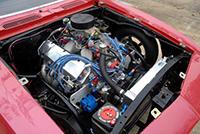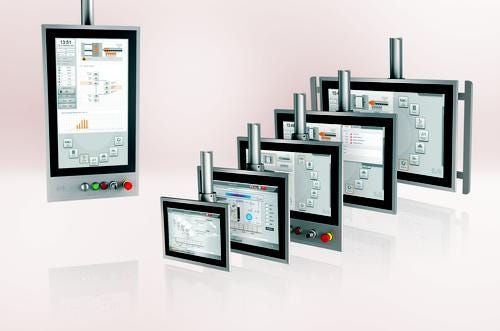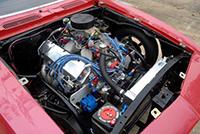Human-Machine Interfaces Are Undergoing a Renaissance
September 15, 2015

The human-machine interface is the midst of an evolution and rejuvenation as the influence of touch-screen technology used in smartphones and tablets is spilling into the design of industrial operator interfaces. Add more powerful microprocessors and connectivity options into the mix, and there are new possibilities and advanced functionality that is helping to fulfill the vision of the HMI as a portal for machine communications.
While there is still a need for value-based HMI options and smaller, less expensive screens, the trends are clear including bigger screens, more resolution and colors, and solutions for harsh industrial environments. But the biggest changes come back to the influence of touch technology and a fundamental change in the ways operator screens are designed.

Impact of Mobile Technology
"The emergence of mobile devices, smartphones, and tablets is having a greater impact on HMI development," said Jen Vacendak, product support engineer and trainer for B&R Industrial Automation. "As new engineers enter the picture, they are accustomed to using those types of devices and we'll be seeing more of a merger between the two technologies."
She said this includes viewing machine status information on a tablet or smartphone, or the machine HMI itself starting to merge with the interface we would typically see on those devices. Operator terminals adopting multi-touch interface hardware is slowly gaining traction, although there are still significant benefits in using a traditional industrial panel. In applications such as pharmaceutical or food and beverage where equipment may be required to be hygienic or washdown-safe, industrial panels rated for those environments are still the primary choice.
"Mobile devices are more commonly used for remote monitoring, and less for control," Vacendak said. "E-stops still need to be hardwired, for example, and the result is that mobile devices aren't replacing HMIs but are being used to supplement them."

Focus on Remote Monitoring
"A key trend in HMIs is remote monitoring, and the ability to view screens on a mobile device such as an iPad, iPhone, or Android device," said Clark Kromenaker, product marketing manager for Omron. "Often the manufacturing supervisor wants to monitor production by viewing the HMI, and may also be getting email alerts when a certain machine is down. Remote monitoring provides an ability to view the HMI screens and gain insight into any issues."
"One interesting development is that, since everyone is using smartphones and displays, customers are asking for the same type of functionality that you use on your cell phone," Kromenaker added. "The ability for the user to swipe through screens, multi-touch capabilities using two fingers on the screen, and other smartphone features are also being requested for use on the HMI. Instead of hitting a button to go from screen to screen, for example, the user can swipe the screen to go to the next control setting."
MORE FROM DESIGN NEWS: Omron: Manufacturing Inches toward Industry 4.0
The popularity of mobile-type interfaces is also influencing the design and layout of operator interface screens. Usability has become a much larger issue and has become more important as new operators and engineers enter the workforce. Younger people are accustomed to multi-touch including pinch to zoom features, and interacting with interfaces in a different way than what has been available with traditional industrial interface design.
There is an evolution in HMI interface hardware but the demands of the factory are limiting changes to the physical hardware at the machine itself. Safety and reliability of the hardware are key concerns, and consumer products are designed for a different purpose.
Kromenaker said one trend is customers asking for larger screen sizes. Typically, he said, Omron HMIs start at 3 inches for a low-end version, and go up to 15 inches. Now there are requests for 21- to 25-inch displays, which is an interesting trend as the HMI becomes a central focus of machine visualization. Design engineers have also been interested in transferring alarm or status display screens, for example, to large 70-inch monitors that might be above the factory floor for carrying messages to a larger audience.
Control & Visualization Options
New device options that illustrate the direction of HMIs include new C panels from B&R, which are available in portrait, landscape, and widescreen formats. The panels offer bezel color choices, and include a built-in PLC processor for control. An auxiliary T panel uses the main controller's IP address to display information. One option is to use a PLC with no screen and send visualization information to the auxiliary panel, or have a C panel on the machine and one or more auxiliary panels further down the line for viewing information, as well.
For high-performance applications, users commonly select a standalone industrial PC for control. But the integrated controller/panel offers an effective solution for less demanding needs for machine and motion control using the Powerlink network.
"We offer custom Mylar overlays that can be ordered in low quantity, and allow our customers to provide their own design. For automation panels that come in larger sizes, offering single and multi-touch displays, users have the ability to add stop-start buttons, a keypad, or an E-stop to be built into the panel," Vacendak said.
Advanced HMI Capabilities
Another clear trend is for the HMI to be providing additional functionality, leveraging more powerful processors, and connectivity within the plant. Most HMIs already participate in the Internet of Things (IoT), since most have a Mac ID and IP addresses.
"Our newest generation of advanced HMIs offers a Visual Basic.Net programming capability into the operator terminal itself," Kromenaker said. "VB.net offers a capability to conveniently connect with the operating system of the HMI to develop all kinds of advanced functionality."
HMI/SCADA Gives Drag Racer Real-Time Edge
The ability to tune an engine immediately before roaring down the track, backed by a carefully designed data acquisition system, has resulted in a world record for drag racer Trevor Stripling.
Stripling drives a 1967 Camaro with a 598 cubic-inch engine in 1/8 mile drag races. He has set a world record with a 5.11 second elapsed time at 143 mph. For quarter-mile drag racers, this is equivalent to a 7.80 E.T. at 180-plus mph. The engine uses nitrous (NOS) and generates 1,300 HP. Stripling lowered his record time to 5.0 seconds at 145 mph. He now holds a world record of 4.99 seconds at 143.86 mph.

HMI/SCADA Software Solution
Stripling works with PLCs, HMIs, and data acquisition equipment in his job as a Control Systems Engineer at Contech Control Services, a provider of engineering procurement contractors (EPC) control services on the US Gulf Coast. He has considerable experience using Web Studio from InduSoft for control, monitoring, and data acquisition in refineries and process plants, so when he needed a data acquisition system for his racecar he called upon his knowledge and experience with industrial equipment.
A PLC (DirectLogic DL06) captures data from oil pressure, fuel pressure, engine vacuum, engine temperature, voltage, nitrous pressure, wideband O2, and engine and driveshaft RPM sensors during the five-second drag strip run. The PLC and HMI are powered by a 12V DC to 24V DC converter that runs off the car's electrical system. All real-time functions of the car, including ignition timing, are handled by the PLC, which connects directly to the MSD ignition and controls the timing. Stripling says the most important engine parameters are the sideband O2 sensors, which report how efficiently the nitrous tune is for given weather conditions. The second are the engine and driveshaft RPMs, and how the suspension settings are responding to engine power and track conditions.
The PLC connects to a HMI with Windows CE (Maple Systems Ivory Series), running the Web Studio HMI/SCADA software. The PLC and HMI connect via standard Ethernet. Stripling said one of the benefits of the HMI is that he was able to move most of the mathematical conversions for the analog sensors to Web Studio, decreasing the scan time in the PLC and allowing it to respond more quickly and make real-time control decisions.
In real time, the PLC acquires data and sends it to Web Studio where it is converted and sent back over the Ethernet connection. During the five-second race, the two systems exchange about 10,000 data values. The system is fast enough that the PLC can use the converted data to control the engine.
Users can create their own keypad, for example, that might have international symbols instead of letters and numbers, or customize objects within the toolbox to operate differently from standard operation. One example would be using VBScript animate complex machine motion on the display. This programming option provides machine builders with the ability to be more creative and to create custom programming to enhance operation. That might include specific functionality that the HMI typically can't represent well visually, or the ability to link multiple tasks together.
For data collection applications, there's an ability to add an FTP server to the HMI. Data files can be collected on the HMI and uploaded to the control system. Omron controllers support a SQL client, and provide a mechanism for collecting machine or manufacturing performance information along with data from the HMI and transferring it to a SQL server, which may be in the IT infrastructure.
"The focus with this approach is adding sophistication to how the HMI operates and also the ability to offer connectivity within the factory," Kromenaker said. "The user has more flexibility to add more options that they couldn't before."
The processing power of newer Omron HMIs is using Intel Atom processors and the Windows Embedded Compact 7 (WEC7) operating system to enable use of VB.net on the HMIs.
Market Direction
Going into the future, Kromenaker said the direction of the HMI market will be moving in tandem with using the most popular screen technologies used on phones and televisions. There was a time when major control suppliers went to screen manufacturers to have their own displays built. The trend now is to use the technology that is the volume market mover in terms of screen technologies to drive future HMI offerings.
Other interesting developments are the continuing miniaturization and improved power efficiency of electronics. We may see the HMI mounted on the surface of the enclosure or the machine with just small hole(s) in the panel for power and communications instead of having to cut a rectangular opening in a panel to mount the HMI device.
"If Power over Ethernet (PoE) continues to grow, there would only need to be one electrical connection to the HMI instead of the current two connections of power and communications. This would reduce heat buildup in the enclosure, make the HMI easier to install, and would also make it easier to meet hazardous location requirements, since cutouts into the enclosure would be minimized," Kromenaker added. "The next step beyond this may be an 'on machine' HMI, where the HMI no longer has an enclosure, is mounted directly to the machine wherever needed, and connects to a machine communications block nearby or perhaps operates wirelessly."
Upcoming features for industrial HMIs may also include more integration with diagnostics and media plus easy, on-screen accessibility to hardware manuals for troubleshooting. B&R's System Diagnostics Manager (SDM) is an example of a tool that can be accessed over the Web using the IP address of the controller to view diagnostics and error information for the machine.
A new Visual Components package for Automation Studio available from B&R later this year will extend the set of templates, tools, and visual elements used to design screens to help achieve the look and feel of modern interface solutions and incorporate newer technology, such as HTML5.

Design engineers and professionals, the West Coast's most important design, innovation, and manufacturing event, Pacific Design & Manufacturing, is taking place in Anaheim, Feb. 9-11, 2016. A Design News event, Pacific Design & Manufacturing is your chance to meet qualified suppliers, get hands-on access to the latest technologies, be informed from a world-class conference program, and expand your network. (You might even meet a Design News editor.) Learn more about Pacific Design & Manufacturing here.
About the Author(s)
You May Also Like

.jpg?width=300&auto=webp&quality=80&disable=upscale)

